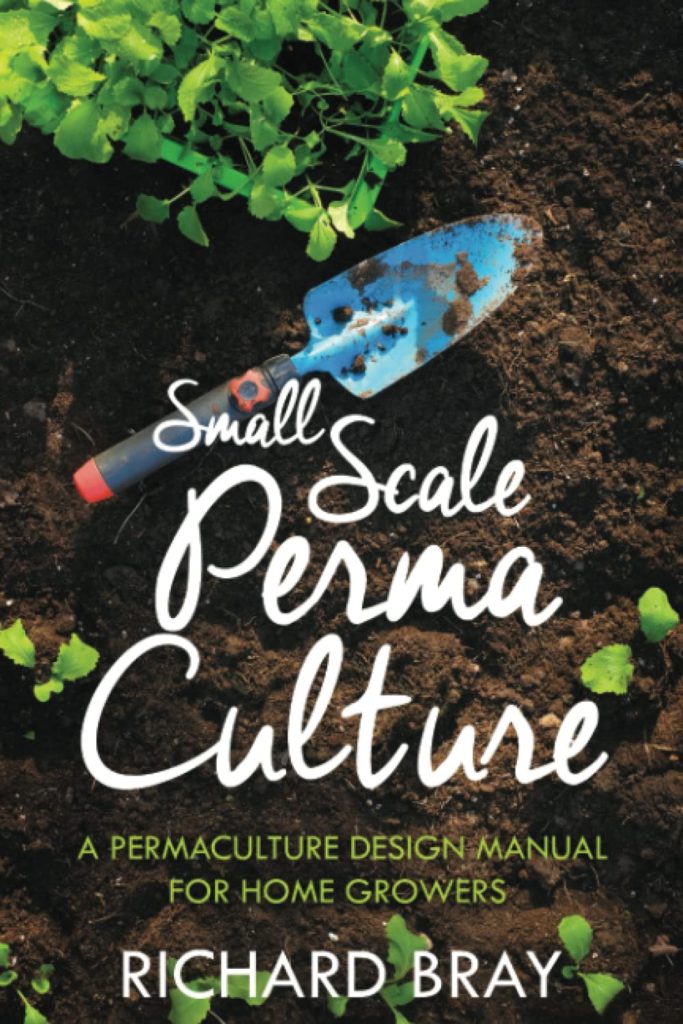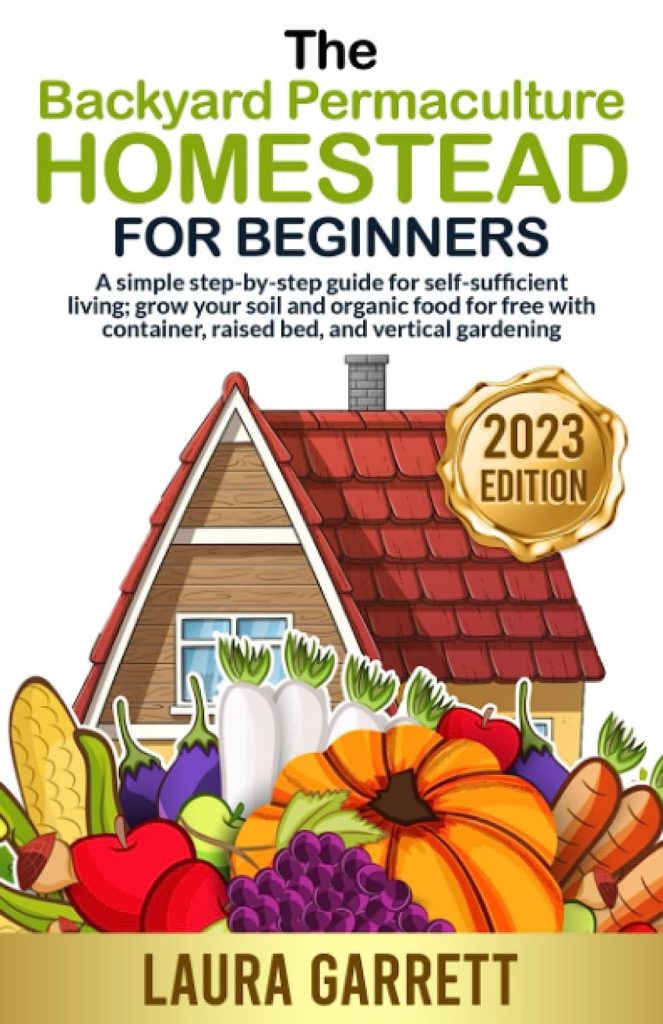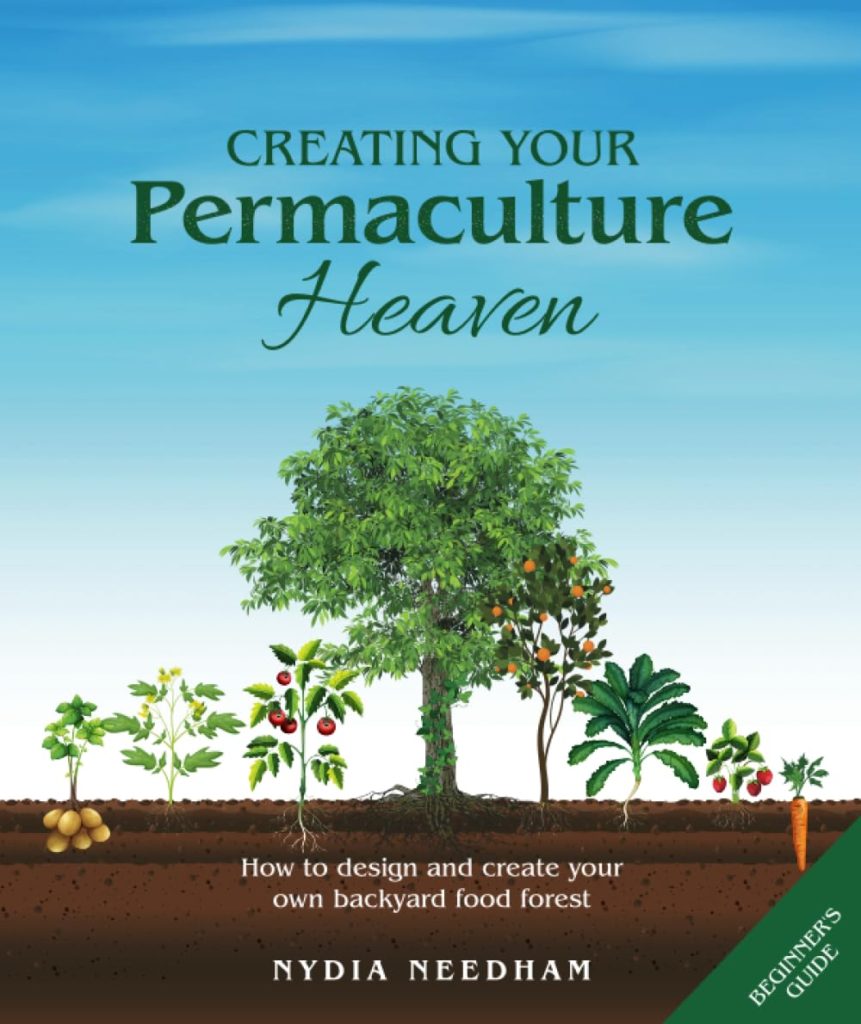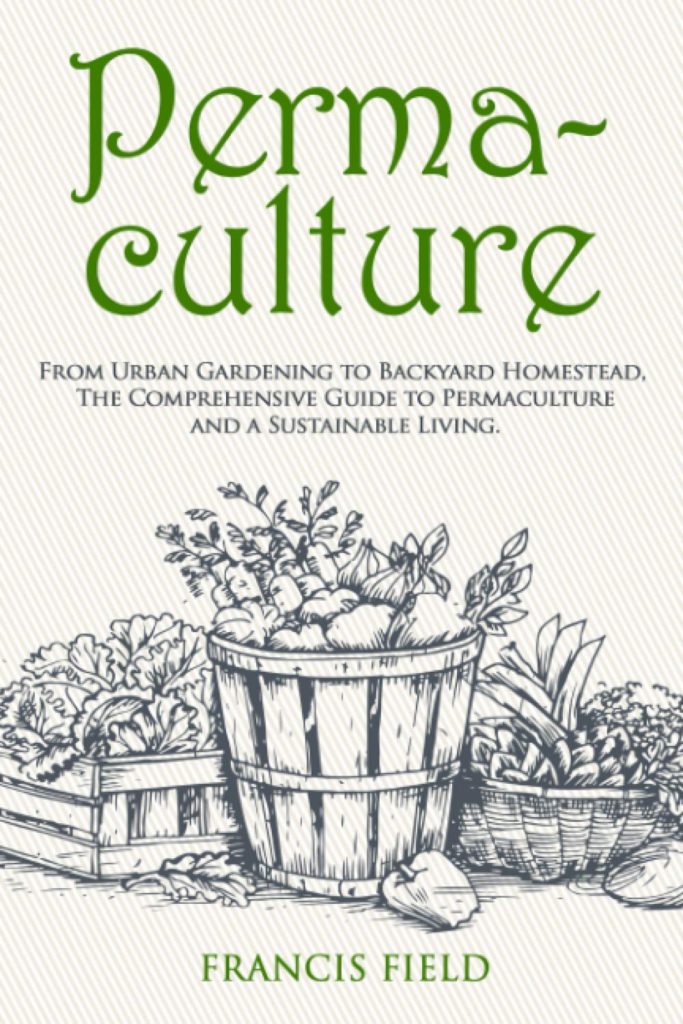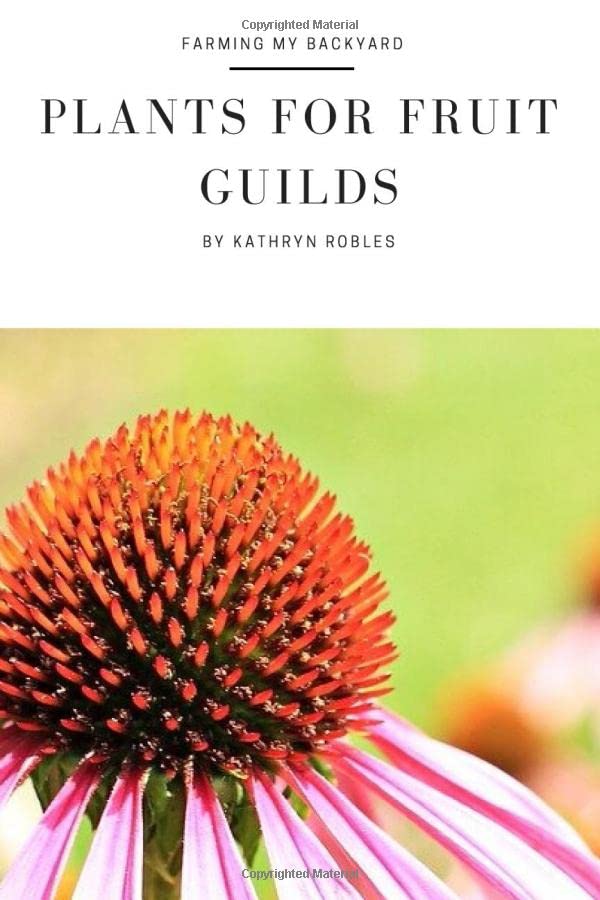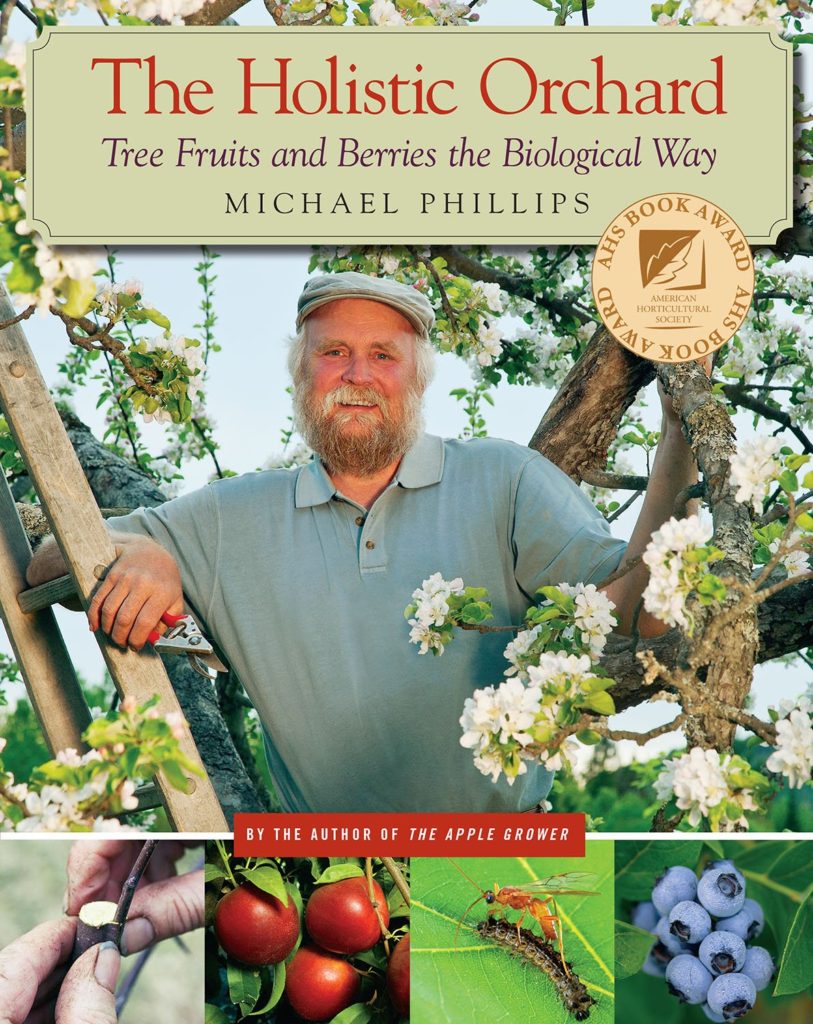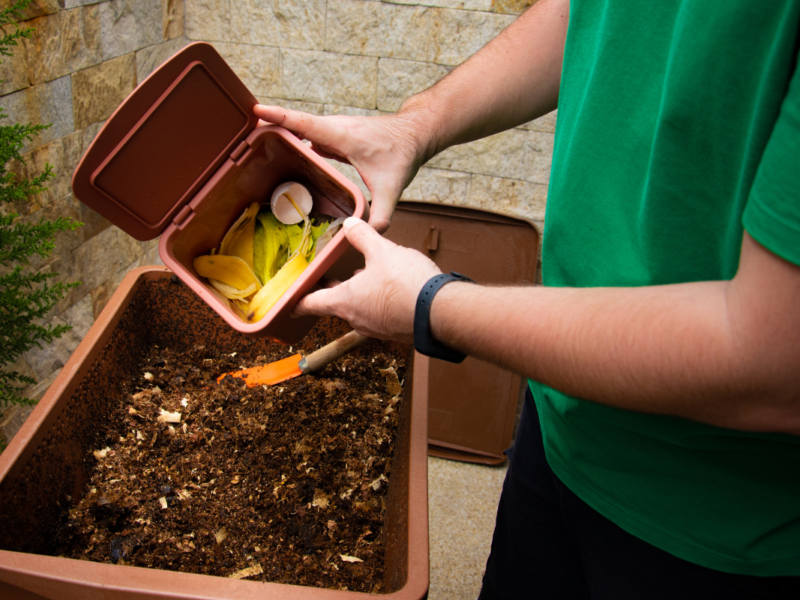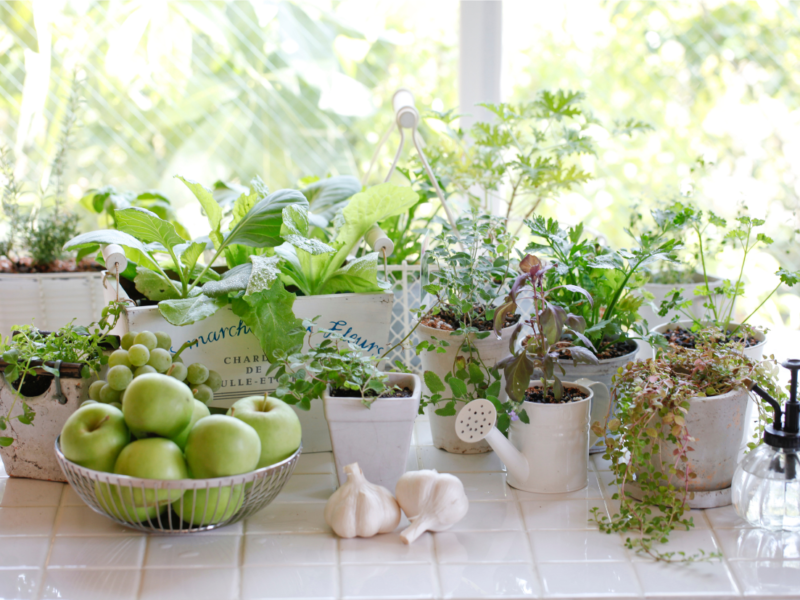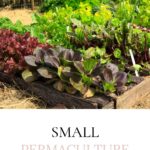Permaculture has emerged as a powerful approach integrating ecological principles and sustainable design to create productive and resilient landscapes. While traditionally associated with farmers, permaculture principles can be applied to small backyard spaces, making them ideal for homeowners, urban dwellers, and homesteaders. This blog explores various permaculture garden layouts tailored for different plot sizes under an acre. So, let’s embark on this journey toward a thriving backyard permaculture garden!
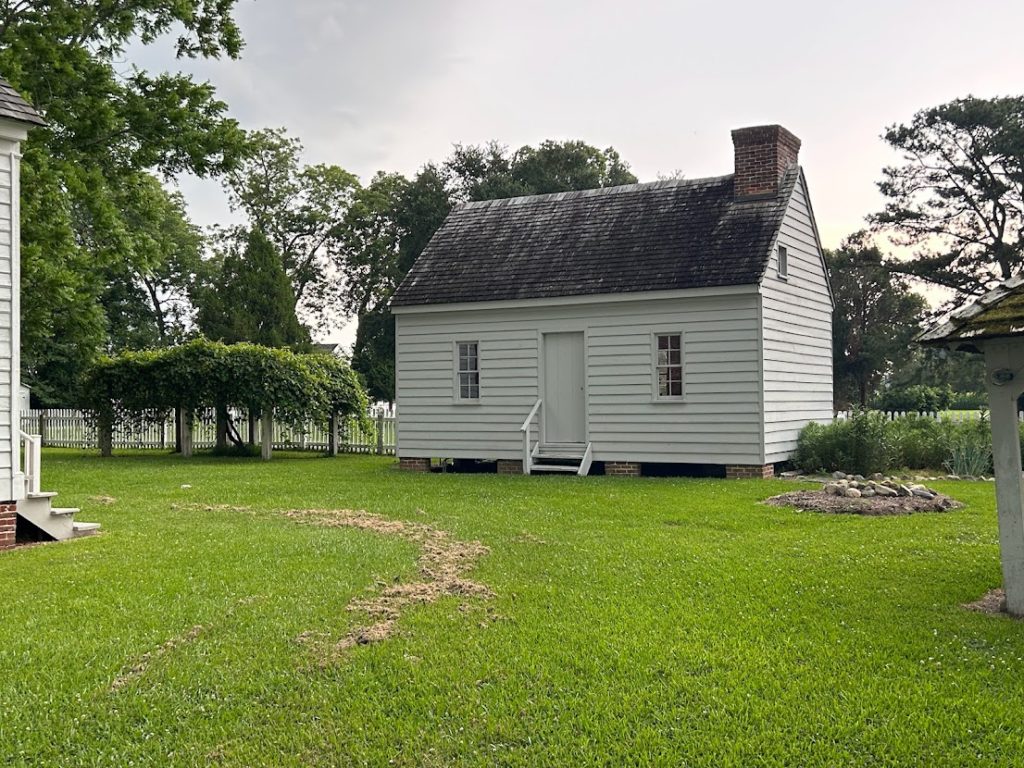
This post may contain affiliate links, which means I can receive a commission from any purchase made from the links. I earn from purchases from Amazon links. See the disclosure policy here.
Permaculture represents a holistic and regenerative approach to land management. It combines natural ecosystem processes with human interventions to create resilient and autonomous systems.
Unlike conventional agriculture, which relies on external inputs like synthetic fertilizers and toxic herbicides, which often cause environmental degradation, permaculture aims to mimic natural ecosystems, fostering biodiversity and restoring ecological balance.
Permaculture Basics: A Sustainable Paradigm Shift
Now it is more important than ever to source sustainable foods. Indeed, learning how to grow your own is an easy way to do this.
Permaculture vs. Agriculture: Real-World Solutions for Farmers
Permaculture offers farmers an alternative to conventional agriculture. Restoration agriculture, a branch of permaculture, emphasizes creating productive and sustainable landscapes while restoring degraded land.
By adopting permaculture principles, farmers can enhance soil health, conserve water, and promote biodiversity, resulting in increased yields and long-term ecological benefits.
Designing Small Permaculture Gardens: Tailoring to Your Plot Size
¼ Acre Garden Design: Maximizing Productivity in Limited Space
With a ¼ acre plot, careful planning is vital to making the most of your space. Consider incorporating permaculture-raised beds, optimizing growing conditions, and allowing for efficient space utilization.
Implement intercropping garden layouts, where compatible plants are grown together to maximize yields and deter pests naturally. Opt for vertical gardening techniques to capitalize on the limited ground area.
½ Acre Garden Design: Balance and Diversity in Mid-Sized Spaces
A ½ acre plot provides more room for experimentation. Embrace diversity by incorporating a mix of perennial and annual crops, fruit trees, and native plants.
Employ permaculture design software to visualize and optimize your garden layout. Implement water-harvesting strategies, such as swales or rain barrels, to maximize water efficiency and mitigate erosion.
Essential Elements for Homestead Garden Layouts
Homesteaders can create autonomous systems through permaculture design. To achieve this:
- Focus on integrating livestock, composting systems, and food forests.
- Raise animals on pasture rotations to provide natural fertilization and pest control.
- Combine different permaculture zones to accommodate vegetable patches, herb gardens, and animal enclosures.
- Ensure effective waste management by composting kitchen scraps and animal waste.
Best Permaculture Plants: Nurturing Biodiversity and Resilience
Plant selection is crucial in promoting biodiversity and creating a resilient ecosystem in a permaculture garden.
Choose native plants that are well-adapted to the local climate and soil conditions. Incorporate dynamic accumulators and nitrogen-fixing plants to enhance soil fertility naturally.
Explore companion planting techniques to create mutually beneficial plant communities that deter pests and improve overall garden health.
Download Our Free Companion Planting Guide Here
Urban Permaculture Design: Thriving in Limited Spaces
Permaculture is not limited to rural areas; it can also adapt to urban settings. In an urban permaculture design, prioritize space optimization and vertical gardening.
Utilize containers, rooftop gardens, and community spaces to grow food and promote green spaces. Emphasize composting and rainwater harvesting to reduce waste and conserve resources.
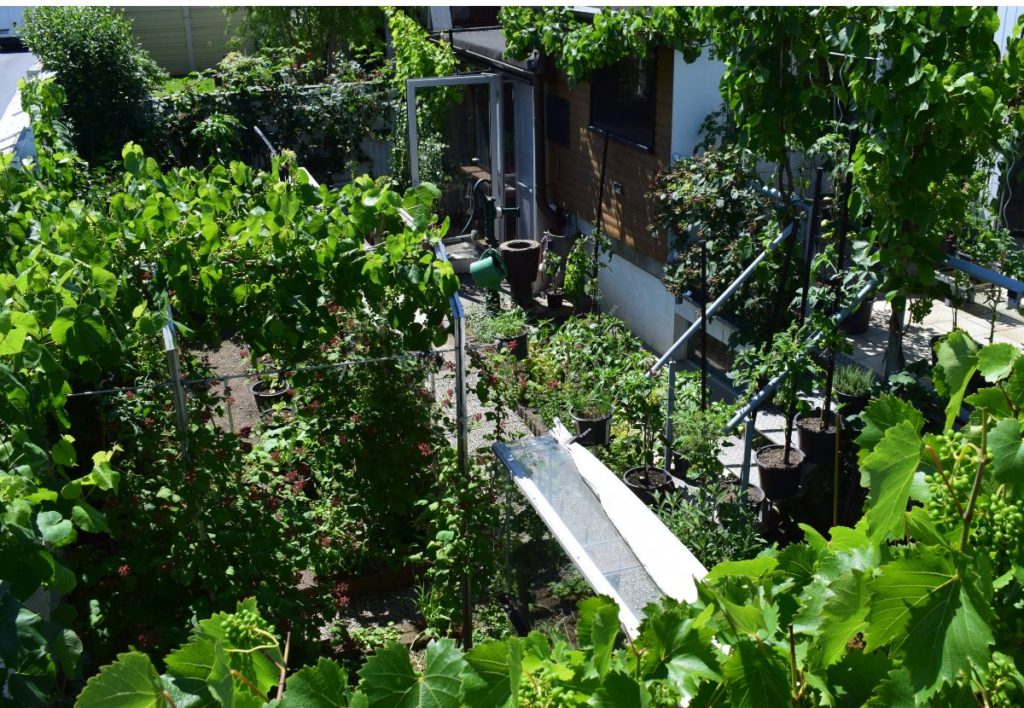
Small Permaculture Garden Layout Ideas for Your Backyard
Permaculture offers innovative ideas and techniques to transform your garden into a sustainable and thriving ecosystem.
By integrating ecological principles and design strategies, permaculture enables us to create productive and regenerative spaces that benefit the environment and ourselves. Gardening is a simple and pleasurable way to live more sustainably.
Some ideas for incorporating permaculture in your garden include creating diverse plant guilds that promote beneficial interactions, implementing water harvesting and conservation systems such as rain barrels and swales, using organic and natural methods for pest control, incorporating composting and vermiculture to nourish the soil, and maximizing space through vertical gardening and intercropping techniques.
These ideas, rooted in permaculture principles, not only enhance the beauty and productivity of your garden but also contribute to the larger goal of creating sustainable and resilient edible landscapes.
Simple Culinary Permaculture Layouts
What are Guilds? Guilds in permaculture refer to a concept where plants and other organisms are deliberately grouped in a mutually beneficial arrangement within an ecological system. These guilds consist of a central plant or tree, known as the “guild leader,” surrounded by companion plants, ground covers, insect-attracting plants, nitrogen-fixing plants, and beneficial organisms such as fungi and insects. Each member of the guild contributes specific functions that support the overall health and productivity of the ecosystem. For example, nitrogen-fixing plants replenish the soil with essential nutrients, while ground covers prevent erosion and suppress weeds. Permaculturists aim to mimic ecosystems’ natural patterns and relationships by creating guilds, enhancing resilience, biodiversity, and productivity while minimizing the need for external inputs and interventions.
Apple Tree Guild
- Plant aromatic herbs such as thyme, chamomile, and dill around the base of the apple tree. These herbs attract beneficial insects that help pollinate the tree and deter pests.
- Include nitrogen-fixing plants like clover or legumes to improve soil fertility and provide nutrients to the apple tree.
- Interplant with companion vegetables such as lettuce, spinach, or radishes, which can benefit from the partial shade provided by the apple tree’s canopy.
Cherry Tree Guild
- Surround the cherry tree with aromatic herbs like lavender, sage, and mint to repel pests and attract beneficial insects.
- Intercropping around the tree with strawberries, asparagus, and chives is a living ground cover that suppresses weeds. Also, these plants grow well together for pest control and attracting pollinators.
- Incorporate nitrogen-fixing plants such as peas, clover, or vetch to enhance soil fertility and support the cherry tree’s nutrient needs.
Peach Tree Guild
- Add culinary herbs like rosemary, basil, and oregano to the peach tree. These herbs repel pests and add flavor to your meals.
- Include flowers such as marigolds or calendula to attract pollinators and provide a splash of color.
- Plant low-growing vegetables like carrots, beets, or kale, which thrive in the shade cast by the peach tree and use available space.
Plum Tree Guild
- Surround the base of the tree with aromatic herbs like rosemary, basil, and cilantro, enhancing the flavors of your culinary creations.
- Intercrop with vegetables such as lettuce, spinach, and radishes, which benefit from the partial shade provided by the plum tree.
- Include companion plants like nasturtiums, which act as a natural pest deterrent and add vibrant color to your garden.
- Plant climbing crops like tomatoes or cucumbers on trellises against the plum tree, utilizing vertical space and increasing the overall productivity of the guild.
- Consider including edible flowers like pansies or violas for garnishing dishes and adding visual appeal.
Read Next: Our List of the Best Trees to Plant in Your Yard
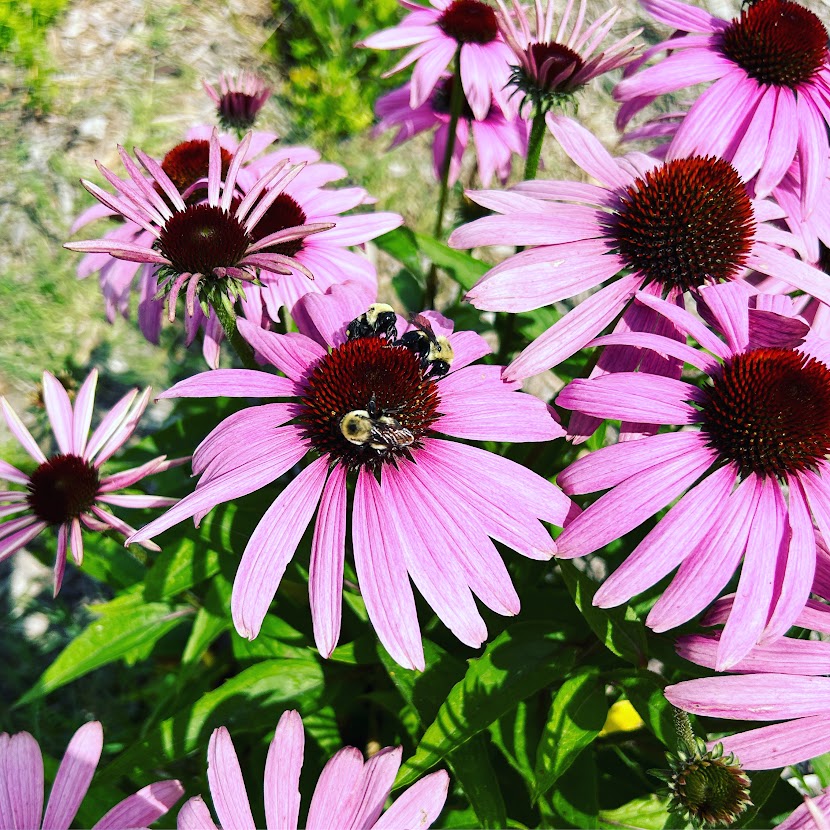
Medicinal Permaculture Layouts for The Backyard
Pear Tree Guild
- Pear Tree (Central Element): Choose a disease-resistant pear tree variety suited to your climate and soil conditions. Pears provide delicious fruit and as a focal point for the guild, attracting pollinators and beneficial insects.
- Chamomile (Ground Cover): Plant chamomile around the base of the pear tree. This fragrant herb acts as a living mulch, suppressing weeds, conserving soil moisture, and attracting pollinators. Chamomile flowers can be harvested and dried for their calming properties, making it an ideal addition to your herbal medicine cabinet.
- Lemon Balm (Companion Plant): Lemon balm thrives in partial shade and complements pear trees by repelling pests like aphids and attracting beneficial insects like bees and butterflies. Its leaves have a pleasant lemon scent and can be used in herbal teas and salves for their soothing properties.
- Echinacea (Pollinator Attractor): with its vibrant flowers, Echinacea attracts pollinators to help ensure a healthy pear tree harvest. Additionally, echinacea has immune-boosting properties and can be used in herbal remedies to support the body’s natural defenses.
- Calendula (Pest Deterrent): Calendula not only adds a pop of color to the guild but also repels pests such as aphids and nematodes. Its flowers are edible and can be used in salves and creams for their soothing and anti-inflammatory effects.
- Lavender (Aromatherapy and Pest Repellent): Plant lavender around the perimeter of the guild. Its aromatic flowers and foliage are calming and help deter pests like moths, fleas, and mosquitoes. Lavender can be harvested and used in herbal sachets, bath products, and teas for relaxation and stress relief.
- Dandelion (Dynamic Accumulator): Allow dandelions to grow naturally within the guild. Despite their reputation as weeds, dandelions have deep taproots that mine nutrients from the soil and make them available to neighboring plants. Dandelion leaves can be used in salads and herbal infusions, offering detoxifying and diuretic properties.
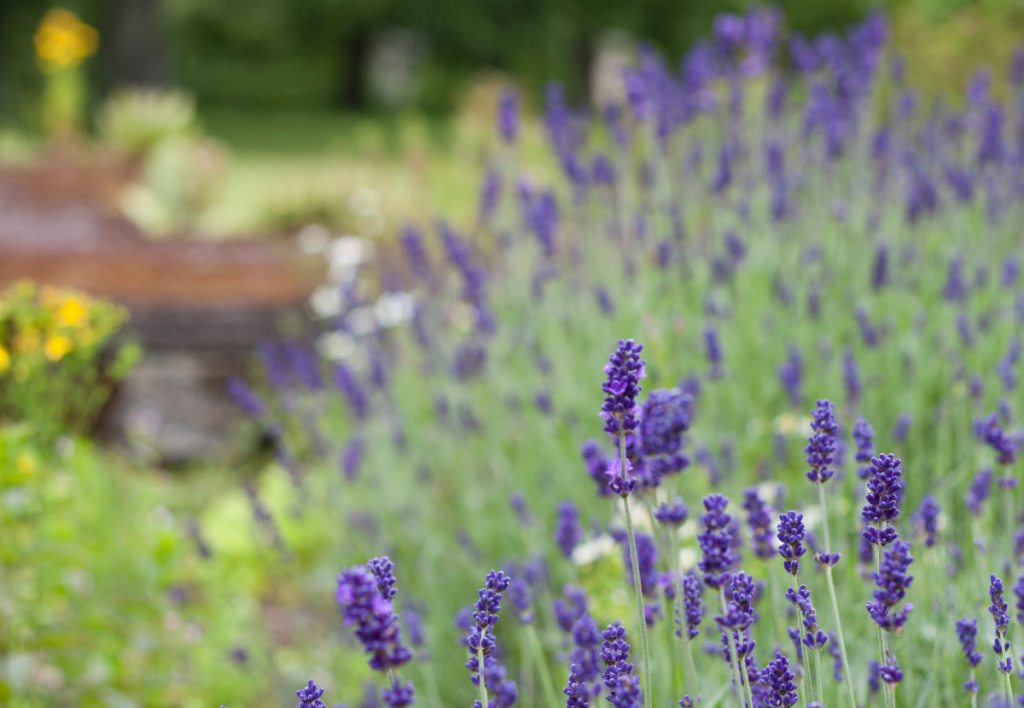
Medicinal Herb Garden Layouts
- Herb Spirals: Constructing a herb spiral is a popular permaculture technique that provides a variety of growing conditions within a compact space. Plant medicinal herbs like lavender, chamomile, mint, and lemon balm at different spiral levels, creating a microclimate suitable for each herb’s needs. This design maximizes space while offering easy access to various medicinal plants.
- Medicinal Hedgerows: Planting a hedgerow with a mix of medicinal plants can serve multiple functions. It acts as a windbreak, provides a habitat for beneficial insects, and offers a continuous supply of medicinal herbs. Include plants like elderberry, echinacea, yarrow, and rosemary, which have immune-boosting, antimicrobial, an
- d anti-inflammatory properties.
- Perennial Medicinal Beds: Dedicate a section of your garden to perennial medicinal plants. These long-lived plants, such as echinacea, marshmallow, comfrey, and valerian, establish deep root systems and provide a sustainable source of medicinal herbs year after year. Consider companion planting with other beneficial plants to enhance their growth and deter pests.
- Medicinal Trees and Shrubs: Integrate medicinal trees and shrubs into your garden design. Trees like elderberry, hawthorn, and willow offer medicinal properties and provide habitat for birds and wildlife. Shrubs such as rosemary, lavender, and blueberry can be pruned to maintain a compact size while providing medicinal benefits.
- Medicinal Herb Tea Garden: Designate an area specifically for growing herbs used in herbal teas. Include plants like chamomile, lemon verbena, peppermint, and lemon balm. Not only will you have a calming and aromatic garden space, but you’ll also have a readily available supply of herbs for making soothing and health-promoting teas.
- Medicinal Kitchen Garden: Incorporate medicinal herbs into your kitchen garden. Grow culinary herbs like thyme, oregano, sage, and basil, which have both culinary and medicinal uses. Use them fresh or dry in teas, infusions, and herbal remedies.
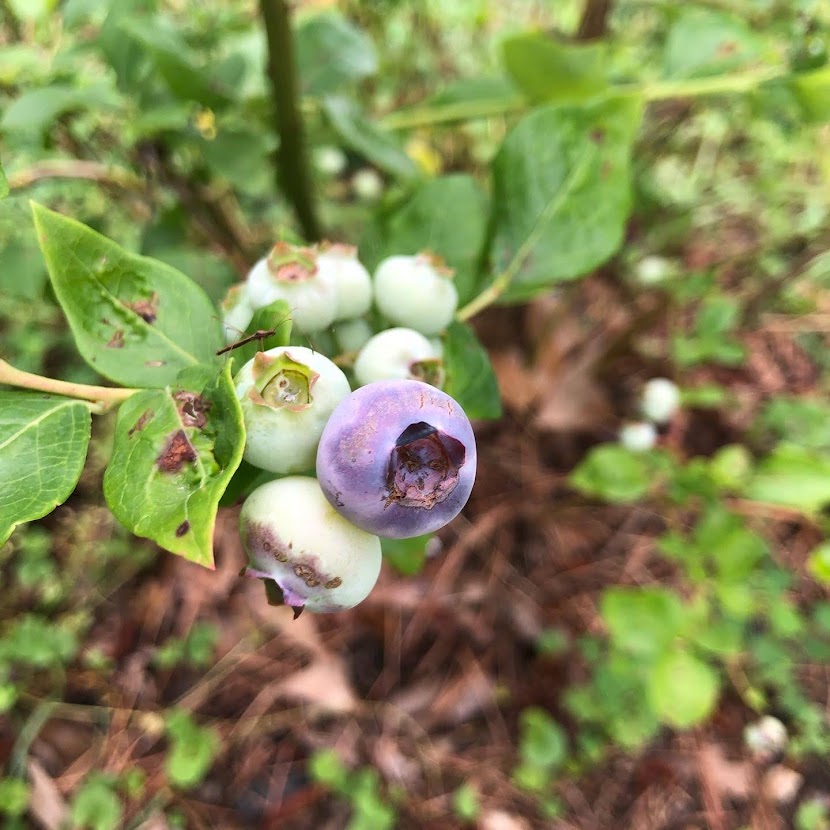
Berry Bushes Hedgerow Permaculture Guild
A permaculture berry hedgerow is a versatile and productive addition to any garden, providing many benefits while yielding an abundant harvest of delicious berries. Blueberries especially love acidic soil, so planting alongside pine trees works well!
This sustainable and multi-functional living fence offers privacy, beauty, and a diverse ecosystem supporting humans and wildlife. Here are some key features of a permaculture berry hedgerow:
- Diverse Berry Varieties: Incorporate a mix of raspberry, blackberry, blueberry, currant, and gooseberry bushes to extend the harvest season and provide a range of flavors and nutritional profiles.
- Supportive Companion Plants: Intersperse the berry bushes with aromatic herbs like lavender and lemon balm to deter pests, attract pollinators, and enhance the overall health of the hedgerow.
- Ground Covers and Living Mulch: Plant low-growing ground covers such as strawberries and creeping thyme between the berry bushes to suppress weeds, conserve moisture, and provide additional harvests.
- Vertical Support Structures: Install trellises or support systems for climbing berries like raspberries and blackberries to maximize space and ease of maintenance.
- Wildlife Habitat: Create a diverse habitat by including birdhouses, nesting boxes, and other structures to attract beneficial insects, birds, and bats that contribute to pest control and pollination.
- Soil Building and Mulching: Apply organic mulch, such as wood chips or straw, around the base of the berry bushes to improve soil fertility, moisture retention, and weed suppression. Regular pruning and maintenance will ensure the hedgerow remains productive and healthy, offering a sustainable and bountiful berry harvest year after year.
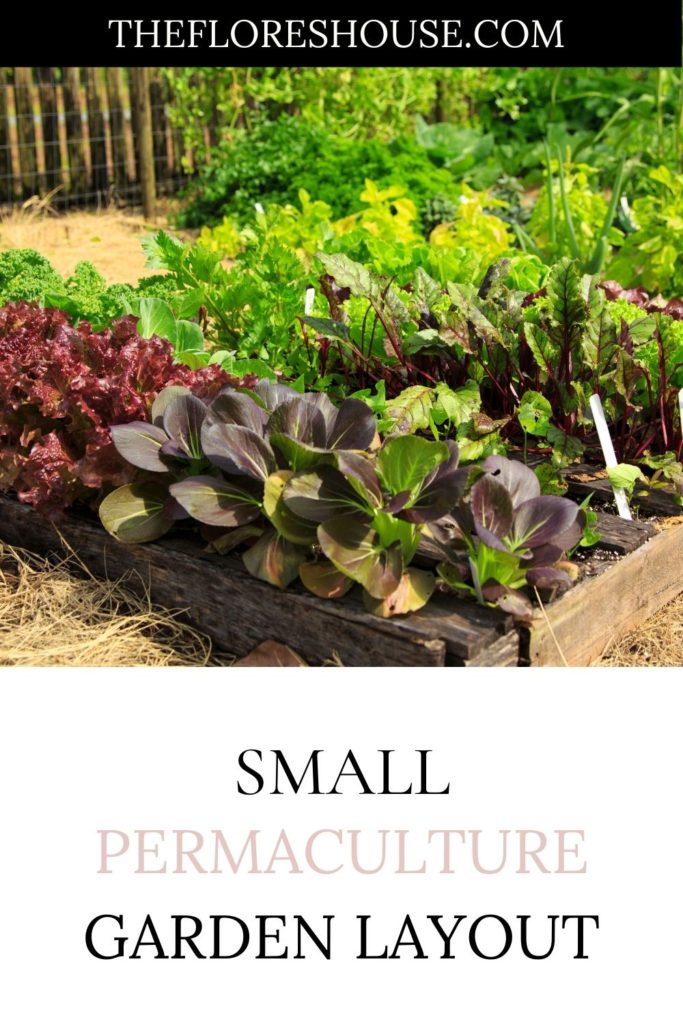
Creating a permaculture garden in your backyard, regardless of size, is an empowering step towards sustainability, self-sufficiency, and regenerative agriculture.
By incorporating permaculture principles, you can transform your space into a thriving ecosystem that provides abundant harvests, enhances biodiversity, and restores ecological balance.
Whether you have a small backyard or a homestead, the key lies in careful planning, thoughtful plant selection, and integrating sustainable practices.
Start your permaculture journey today, and witness the transformative power of nature-inspired design in your backyard.
Read Next: Heirloom Gardening for Homesteaders
